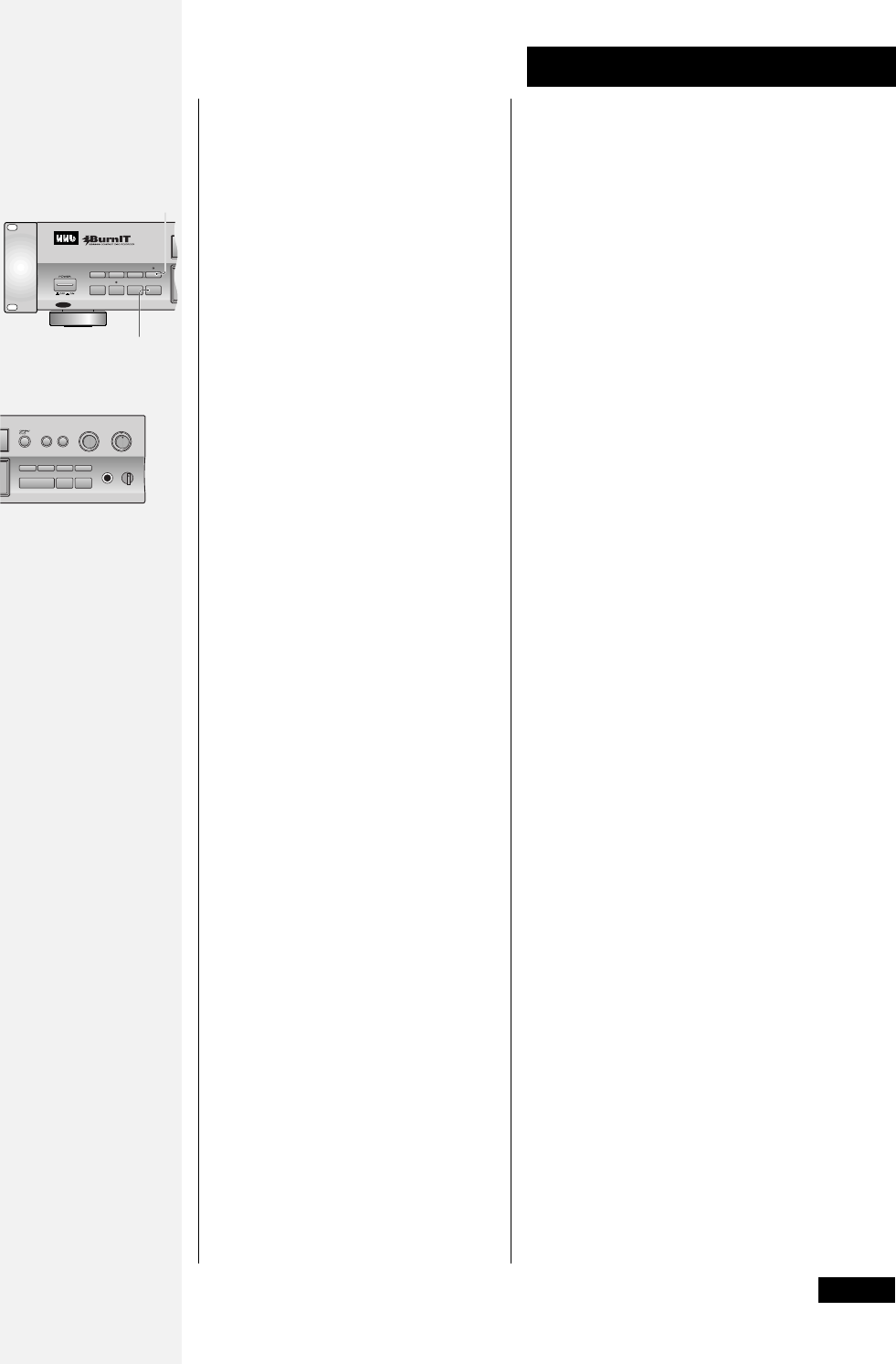
23
4 Getting started
Setting the
digital recording
level
One of the advantages of digital-
to-digital recording is that you
don't have to set recording
levels—and risk distortion by
overloading the disc. With pre-
recorded material, the digital level
has usually been optimized and
you shouldn't need to change it. If
you're making a digital copy of a
CD, DAT or MD that was not
optimally produced and that was
consistently under-recorded, you
can boost the overall level by up
to +20dB. Remember though,
that any peaks in the original
recording run the risk of
distorting the copy.
In many other digital recording
applications, you may also have
cause to boost the recording
volume since the volume of some
digital sources can be relatively
low, but again, if there are any
peaks in the source material, you
run the risk of momentary
distortion.
It's also possible to reduce the
digital recording volume, but in
most cases, this is not desirable.
However, if you're putting
together a mix CD (various tracks
compiled from different sources),
and there is a track which stands
out as generally louder than the
others, then you might want to
reduce the level of that track.
Note that this feature will not
remove distortion already on the
source material.
Once changed, the new digital
recording level remains until you
change it again, or reset it. Each
digital input has its own level
which can be set independently.
Note: If you are recording DTS
encoded audio CDs or HDCD
format CDs, the digital recording
level must be set to 0.0dB for
recording.
MONITOR
INPUT
SELECTOR
AUTO
MANUAL
TITLE/MODE
TRACK NO.
WRITE
DISPLAY
FINALIZEERASE
SCROLL
CD TEXT
1


















